Solar urticaria. Causes and treatments for solar urticaria
Manifests solar urticaria under the influence of the sun, it is also called photodermatosis. This disease can cause a lot of inconvenience, especially hard for people suffering from this disease in the summer. The causes of the disease, forms and methods of treatment may be different.
What is sun hives
This disease is often called sun allergy, since urticaria in the sun manifests its symptoms when the patient is under sunlight from 15 minutes to an hour. Blisters and rashes form on some areas of the skin that have not been protected from sunlight. The rash is usually very small, a couple of millimeters, but more severe cases it can reach a centimeter. Symptoms may not appear immediately after exposure to the sun; in some cases, it may take a day or two.
 A fifth of the population suffers from this unpleasant disease to one degree or another. As a rule, the size and number of rashes directly depends on the strength of sun exposure. If the patient has been exposed to strong sunlight for a long time, the rash can cover quite large area the surface of the skin and its dimensions will be quite large.
A fifth of the population suffers from this unpleasant disease to one degree or another. As a rule, the size and number of rashes directly depends on the strength of sun exposure. If the patient has been exposed to strong sunlight for a long time, the rash can cover quite large area the surface of the skin and its dimensions will be quite large.
The rash usually has a pinkish tint and a reddish line around the edges. The symptoms of such urticaria disappear within about a couple of hours after contact with sunlight, sometimes faster.
Covering the skin can protect it from sun exposure, but lightweight fabrics such as chiffon will not completely protect it, and the hives will most likely appear in a milder form. Very often, the rash appears precisely in those places where there are patterns on clothing in the form of open stripes or patterns. It happens that sun allergies are accompanied by other unpleasant symptoms. Sometimes there may be signs of suffocation, lack of air, and an increase in body temperature. Quite often, the rashes that appear are very itchy, a burning sensation appears, which only goes away with the rash itself.
Causes of the disease
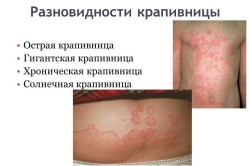 This urticaria is significantly different from ordinary allergies, since there are no special antibodies in the patient’s blood that could cause a reaction, for this reason it is often called pseudoallergic urticaria. Manifestations allergic reaction in the form of rashes or blisters appear due to the release of histamine, which can occur due to photosensitizers located on the surface of the skin or under it. These are substances that increase exposure to sunlight.
This urticaria is significantly different from ordinary allergies, since there are no special antibodies in the patient’s blood that could cause a reaction, for this reason it is often called pseudoallergic urticaria. Manifestations allergic reaction in the form of rashes or blisters appear due to the release of histamine, which can occur due to photosensitizers located on the surface of the skin or under it. These are substances that increase exposure to sunlight.
The cause of an allergy to the sun may be hidden in cosmetics, for example, cream or deodorant, or decorative cosmetics. In this case, it usually appears precisely in the places where the cosmetic product is applied. There are also internal reason formation of photosensitizers or toxic substances. The formation of toxic substances can cause liver, kidney, endocrine system. Sometimes harmful substances can form in the patient’s body due to taking medications, which include some types of antibiotics, birth control pills, and sometimes medicinal herbs cause such a reaction (St. John's wort).
If the cause of the blisters is internal, then the rash can appear on any parts of the skin that are exposed to sunlight. Often the rash occurs symmetrically.
Women suffer from solar urticaria several times more often than men; the risk of this disease occurring is especially high in people with a light skin tone. Sometimes such a disease can be transmitted from parents, that is, it is hereditary. But the likelihood of hereditary transmission of the disease is not very high. Less commonly, people living in the south, close to the equator, suffer from such urticaria. Manifestations of allergies to the sun are more likely to be typical for residents of northern regions.
Drug treatment of solar urticaria
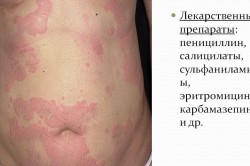 should occur under the strict supervision of a doctor; it is very important that a specialist determine the cause of the disease. If the liver or other internal organs are affected, you should first of all pay attention to their condition. Often such urticaria is treated with antihistamines, including third generation. These may be Claritin, Zertec, Acelastine, Terfenadine. The choice of such means is explained by their safety; they have a limited effect, without affecting the central nervous system, heart. Thanks to the lack harmful effects Such drugs can be prescribed for a fairly long course without causing harm to health. The dose of the drug must be prescribed by a doctor, usually starting with a small dose.
should occur under the strict supervision of a doctor; it is very important that a specialist determine the cause of the disease. If the liver or other internal organs are affected, you should first of all pay attention to their condition. Often such urticaria is treated with antihistamines, including third generation. These may be Claritin, Zertec, Acelastine, Terfenadine. The choice of such means is explained by their safety; they have a limited effect, without affecting the central nervous system, heart. Thanks to the lack harmful effects Such drugs can be prescribed for a fairly long course without causing harm to health. The dose of the drug must be prescribed by a doctor, usually starting with a small dose.
Typically, the main contraindications for drugs of this kind are the period of pregnancy and breastfeeding, but if after taking the medicine prescribed by the doctor, discomfort or other symptoms, you must stop taking it and consult a specialist again. Your doctor may recommend using medicinal ointments, to ease the symptoms of the disease, but they should be chosen very carefully so as not to harm the affected skin. The condition of the skin, the degree of manifestation of the disease and other factors should be taken into account. The right ointment will help eliminate not only the rash, but also dry skin.
 Sun allergies of a chronic form are often encountered, which must be treated comprehensively and over a longer course. Typically, prescribed medications are taken for a long time, and then a break is taken and the course can be repeated. Often in such cases, Loratadine is prescribed; this medicine is considered one of the best among third antihistamines generations. It does not have a sedative effect or other negative effects characteristic of many drugs. People can take this drug of different ages, but after consultation with a specialist. Drugs latest generation are able to limit the manifestation of symptoms for a very long time (up to two days), so there is no need to take pills several times a day. Doctors recommend taking Cetirizine, Ebastine, Ranitidine.
Sun allergies of a chronic form are often encountered, which must be treated comprehensively and over a longer course. Typically, prescribed medications are taken for a long time, and then a break is taken and the course can be repeated. Often in such cases, Loratadine is prescribed; this medicine is considered one of the best among third antihistamines generations. It does not have a sedative effect or other negative effects characteristic of many drugs. People can take this drug of different ages, but after consultation with a specialist. Drugs latest generation are able to limit the manifestation of symptoms for a very long time (up to two days), so there is no need to take pills several times a day. Doctors recommend taking Cetirizine, Ebastine, Ranitidine.
It should be borne in mind that sun allergy can intensify under the influence of a number of drugs, so it is imperative to report the presence of such a disease to your doctor in order to avoid side effects. People suffering from this disease should not self-medicate, because an illiterate choice of drug can lead to serious negative consequences.
Other treatments and prevention
In addition to taking medications, you should follow a number of rules to protect your skin from negative effects, limit the manifestation of symptoms and avoid severe forms diseases:

- It is necessary to exclude exposure to bright sunlight, especially in hot summer time from 11 to 16 hours, because at this time it is dangerous to sunbathe even for people who do not suffer from sun allergy, since sunlight is most intense;
- Each time you should apply special protective cosmetical tools before going outside on sunny days, the highest degree of protection should be selected, then manifestations can be minimized;
- clothes should be chosen in light shades, so as not to increase the effect of the sun, it is necessary to wear sunglasses having a protective layer against ultraviolet radiation, hats with wide brims that cover not only the face, but also the neck area from the sun;
- the use of cosmetics and especially decorative cosmetics should be limited or abandoned for a while;
Hello dear readers. With the arrival of summer, everyone wants to spend more time under the warm sun. However, not all people are allowed to do this.
Approximately 3% of the total population of the planet suffers from solar urticaria and therefore the sun's rays are harmful to them. What does it represent this disease and how to treat it correctly? Let's take a closer look at this problem.
Solar urticaria, or otherwise photodermatosis, is allergic disease, where the sun's rays act as an allergen.
After just 15 minutes spent in the sun, blisters and red spots begin to appear on the patient’s skin.
All this according to appearance resembles a nettle burn. It also happens that a rash appears after a couple of days and a person cannot understand where it came from.
Typically, these rashes are accompanied by itching and burning, and also spread to areas not exposed to radiation. Look at the photo on the left: this is what the skin looks like with solar urticaria.
If you move into the shade, the symptoms subside a little, but when you return to open space they resume with new strength. Moreover, they may be accompanied by vomiting, nausea and fainting.
If exposure to sunlight is short-term, slight redness will appear on the skin.
The longer you spend under ultraviolet light, the larger these spots become. The same applies to the solarium (there are the same ultraviolet rays).
Why does solar urticaria occur?
 This disease belongs to pseudoallergic urticaria, since antibodies characteristic of an allergic reaction are not detected in the blood of patients.
This disease belongs to pseudoallergic urticaria, since antibodies characteristic of an allergic reaction are not detected in the blood of patients.
Doctors believe that histamine is released due to exposure to photosensitizers - substances found in skin tissue. It is due to an increase in the amount of histamine that allergies appear.
Doctors have two options for the development of the disease. They have different reasons appearance, but similar clinical picture: solar urticaria of non-allergic and allergic nature.
There are cases of spontaneous recovery from the presented disease. Unfortunately, doctors still don’t really understand the reasons for the onset and cure of the disease.
Some components of deodorants and creams that are applied to the surface of the dermis can act as photosensitizers on the skin.
Internal photosensitizers are activated due to toxic substances formed in the human body during certain diseases of the kidneys, liver, and thyroid gland.
The disease can also be caused by certain medications, such as oral contraceptives, tetracycline antibiotics, sulfonamides and even a decoction of St. John's wort.
 Experts have learned to determine what kind of exposure influenced the formation of urticaria.
Experts have learned to determine what kind of exposure influenced the formation of urticaria.
If the spots on the skin have clear outlines, then the cause of the disease is cosmetics. With symmetrically located spots on open areas of the body, an allergy to the sun most likely arose after taking medications or due to illness internal organs.
It has been proven that women suffer from photodermatosis 4 times more often than men. Special group people with fair skin are at risk.
Children also develop solar urticaria, especially if there is a history of cases in the family. of this disease, that is, it can be inherited.
In addition, people living in northern regions are also more susceptible to rashes due to the sun.
How to treat photodermatosis?
 In fact, there are special prevention rules that allow you to avoid the manifestations of this disease.
In fact, there are special prevention rules that allow you to avoid the manifestations of this disease.
- Try to spend less time in the sun. In the summer, walk before 11 or after 16 hours. Wear clothes in light colors. It should also cover the skin as much as possible. This also applies to your face: wear wide-brimmed hats and glasses.
- Before going outside, be sure to smear yourself with creams or lotions that have a high degree of ultraviolet protection.
- Try to give up creams and decorative cosmetics at least for a while.
- Follow a plant-based diet. Consume more vegetables, fruits, dairy products, meat and fish.
- Keep track of how much water you drink per day (at least 2 liters).
- Remember, if you are allergic to the sun's rays, visiting a solarium is contraindicated for you.
How to treat spots on the skin with chronic solar urticaria?
 To get rid of the disease, you should consult a dermatologist. He will prescribe you a set of medications that you will need to take over a certain period of time. Then a short break is taken, after which the course resumes again.
To get rid of the disease, you should consult a dermatologist. He will prescribe you a set of medications that you will need to take over a certain period of time. Then a short break is taken, after which the course resumes again.
To get rid of burning and itching when mild form Anti-inflammatory creams and gels will help with hives. Ibuprofen and aspirin can help reduce pain.
You can also try to get rid of stains folk remedies. Decoctions of calendula, chamomile, and string are excellent for relieving itching.
Try brewed black tea. They need to treat the affected areas of the skin every half hour until the symptoms of hives completely disappear. Typically, signs of the disease disappear within 24 hours after the allergen (solar radiation) is eliminated.
There are cases of acute solar urticaria. As a rule, they occur due to severe overheating or burning on the beach.
In such a situation, treatment will be based on taking corticosteroid medications, stabilizers cell membranes, antihistamines and ointments that have anti-inflammatory and anti-burn effects.
Therapy lasts 5-10 days. If after this course If the patient does not improve, he will be prescribed a course of B vitamins and photodesensitizing drugs (Delagil, Plaquenil).
 IN Lately There have been successful attempts to treat photodermatosis using extracorporeal photochemotherapy and plasmapheresis.
IN Lately There have been successful attempts to treat photodermatosis using extracorporeal photochemotherapy and plasmapheresis.
Nevertheless, procedures such as PUVA therapy and phototherapy have become more widespread and popular.
Some doctors advise combining antihistamines, PUVA therapy with dosed sunbathing and constant use of sunscreen.
So, as you can see, photodermatosis is a rather rare and little-studied phenomenon. It can disappear for a while without showing itself in any way, and then resume with renewed vigor.
Treatment for solar urticaria is similar to treatment for other types of allergic diseases. To avoid the occurrence of a rash, you should adhere to preventive measures and consult a doctor at the first symptoms. Be healthy!
As soon as spring or summer arrives, each of us relaxes, gets ready to relax and begins to look forward to what the long-awaited vacation will be remembered for. But some people in summer or spring react very atypically to sunlight: redness or swelling appears on their skin, in some cases Crusts form and the dermis often swells. All these symptoms are an indicator that an allergic reaction to the sun has developed, popularly called solar urticaria. Three percent of the world's population suffers from this disease.
Sun urticaria: causes and symptoms
Photodermatitis (solar urticaria) is intolerance to sunlight, an allergic disease in which the role of allergens is played by the rays of the sun. To diagnose the disease, use skin test
, which is irradiated with ultraviolet light. By external manifestation
the disease resembles a nettle burn. Accompanying symptoms of the disease are often itching and burning, which also appear even on those areas of the skin that have not been irradiated.
With short-term exposure to ultraviolet light, sun urticaria is characterized by slight redness on the dermis. But after 15 minutes of exposure to the sun, blisters and red spots appear, and the longer you stay under the rays of the sun, the worse the burns will be. The same rule applies to solariums, where there is the same ultraviolet radiation.
Note. If you take shelter in the shade, the allergy symptoms will subside a little, but another appearance in the sun will lead to them returning with renewed vigor, accompanied by chills, nausea with vomiting, and even fainting. There are also situations when an allergic reaction makes itself felt after a few days.
Most often, people with Celtic skin type suffer from sun-induced hives. Such dermis almost does not “enough” to tan; instead, burns and redness appear on it. Even pregnant women and babies are at risk. The reaction also occurs against the background of disorders of the liver, gastrointestinal and immune systems. The cause may also be products, when consumed, the allergy immediately makes itself felt ( carrot juice
, citruses, spicy, figs, parsley, sorrel, celery). This list also includes nuts, coffee and alcoholic drinks. Allergies can also be caused by plants contained in medicines, ointments, creams, and components of various drinks. A veto is imposed even on tactile contact with these drugs. Important. Dermatologists do not recommend using deodorants, antibacterial soap, decorative cosmetics and perfumes in the summer. Some are also prohibited essential oils
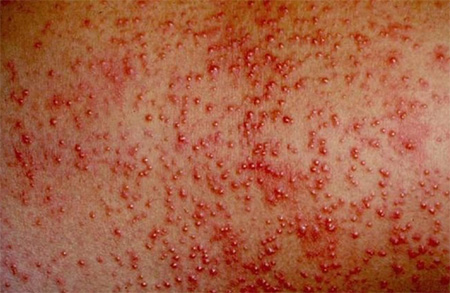
: dill, citrus, patchouli, bergamot and tea tree.
During the period of vacation at sea, taking antibiotics such as Doxycycline, Griseofulvin, Ciprofloxacin, Biseptol is strictly prohibited. Don’t forget about the hereditary factor: a woman who suffered from allergies during pregnancy can pass on her predisposition to it to her child. is also impossible, since all these factors can lead to an even greater spread of the disease.
Treatment

A dermatologist will help you get rid of the disease. Treatment for sun urticaria is similar to treatment for many other types of allergies: drug treatment within 5-10 days. After a short period of time, the course is repeated again. If it doesn't give desired result, then the patient is prescribed antihistamines and B vitamins. Dermatologists recommend PUVA or phototherapy.

Also appointed preventive measures, without which drug treatment will be useless:
- Stay in the sun as little as possible, take walks before eleven or after sixteen hours. Cover your face and body as much as possible with light-colored clothing.
- Before going out into the sun, use ointments and creams with high protection of the dermis from ultraviolet radiation.
- Do not use decorative cosmetics, do not visit the solarium.
- Eat more dairy products, fish and meat, fresh and boiled vegetables. Be sure to drink more than two liters of clean water a day.
Sun urticaria: how to treat it at home?
If going to a dermatologist is impossible for some reason, then it is necessary to stop the sunburn. One of the most reliable ways to get rid of a disease is to “freeze” it. Rub the affected dermis with ice cubes made from chamomile or green tea.
Advice. Take cool or even cold shower. Baths with the addition of oatmeal, string or lavender will also help.
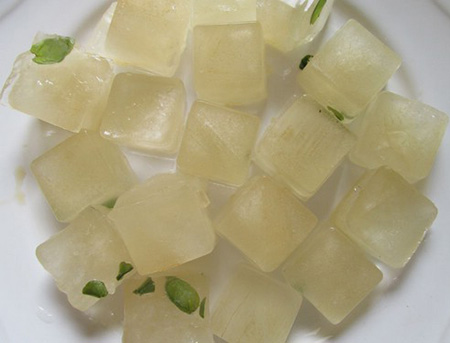
You can also get rid of solar urticaria using an ordinary cucumber. The vegetable is cut into circles, which are then applied to areas where the disease is actively developing. Potatoes are a good alternative. These products will help relieve redness and swelling of the dermis, and relieve the symptoms of urticaria.
If the season allows, try to eat more products with a diuretic effect. These could be apples, watermelons, grapes or melon. Aloe will also help in the fight against puffiness.
Advice. Activated charcoal will help cleanse the body of waste and toxins, and Ibuprofen and aspirin will help relieve redness and reduce the pain of the rash.
How to avoid solar urticaria?
To avoid the consequences of an allergic reaction, try not to be exposed to direct sunlight. Sunbathe only in the shade and at the appropriate time, since at this moment the sun is not at its highest stage of activity. Do not go outside without protective equipment; ladies are advised to purchase beautiful and fashionable wide-brimmed hats. This is necessary so that the face is not susceptible to burns and solar urticaria.
Important. It is best to buy light-colored clothing; it would be an excellent option if it covers all bare areas of the body. This way you will be completely protected from the sun and from extreme heat.
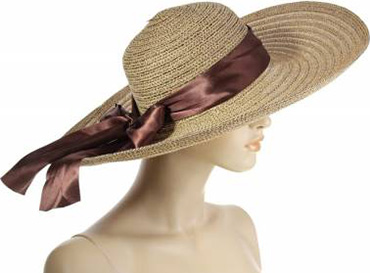
If you swim in bodies of water, dry yourself completely with a towel after leaving the water. Avoid using decorative cosmetics, ointments and creams. Never drink alcoholic beverages. If you are aware of your predisposition to hives from the sun, you should strictly follow hypoallergenic diet. You should not neglect this, as you may get second-degree burns, and a chronic form of the disease may also appear.
Now you know why urticaria from the sun is dangerous and what its symptoms are. When the first signs of this disease appear, you should immediately contact a qualified specialist.
It's no secret that the sun has a powerful influence on us, in many cases it is positive. Sunlight is often a preventive measure for certain diseases, as well as a cure for them. But, unfortunately, not always. Ultraviolet radiation, especially in summer, when it is strongest, can be a provoking factor in the development of many ailments.
Solar urticaria is one such disease. Today it affects about 3 percent of the population of our planet. Solar urticaria is quite rare form photodermatosis. It is characterized by the sudden appearance skin rashes , if the patient is under direct sun rays
. When the effect of ultraviolet radiation stops, the rash disappears just as quickly. The same symptoms are observed when the ultraviolet source is artificial (for example, a therapeutic ultraviolet lamp). Solar urticaria – quite rare disease
, which most often looks like a regular burn.
1. If solar urticaria is of an allergic nature, then the disease develops as follows: ultraviolet rays affect basophils (a type of white blood cells - leukocytes). Their number increases sharply, giving rise to an allergic reaction characteristic of atopic dermatitis or psoriasis.
2. In the case when the origin of the disease is non-allergic in nature, the picture is as follows: special protoporphyrin compounds are actively synthesized in the patient’s body. This leads to the skin becoming sensitive to sunlight or any other ultraviolet radiation. This disease is inherited. It is called erythropoietic protoporphyria.
Main symptoms of solar urticaria
After a short stay in direct sunlight open areas The patient's skin becomes covered with a small itchy rash Pink colour. It protrudes somewhat above the skin level. If exposure to sunlight was longer, the skin turns red, the rash may take the form of blisters with liquid inside, surrounded by a thin rim around the periphery. Upon termination of exposure ultraviolet radiation all skin manifestations disappear quite quickly, the skin becomes clear again.
Features of diagnosing solar urticaria
Solar urticaria is diagnosed quickly, since the symptoms of the disease are quite characteristic. But sometimes it is necessary to exclude a congenital hereditary pathology - erythropoietic protoporphyria. Will be needed additional research, namely, determination of the content of the substance protoporphyrin in red blood cells. If there is a disease, then normal indicators will be exceeded quite significantly.
Causes of solar urticaria
Experts classify this form of photodermatosis as the so-called false allergy, since the patient’s body does not produce antibodies characteristic of a true allergic reaction.
Let's look at what causes solar urticaria: the reason is that the skin of a sick person contains so-called photosensitizers - substances that make the skin sensitive to ultraviolet radiation. The bright sun becomes an allergen for such a person. Under its influence, free histamine is formed in the patient’s body, which triggers an allergic reaction.
There are several factors that provoke the appearance of photosensitizing substances on the skin:
Impaired functioning of internal organs (liver, kidneys, thyroid, stomach);
taking some medicines(antibiotics, contraceptives; sulfonamides, antifungal drugs);
consumption of foods from the prohibited list (citrus fruits, alcohol, nuts, coffee, carrot juice);
using some medicinal plants(St. John's wort, nettle, hawthorn, quinoa, wormwood, clover);
great importance may have a hereditary factor;
Photosensitizer substances can also be contained in cosmetics (creams, deodorants) applied to the skin.
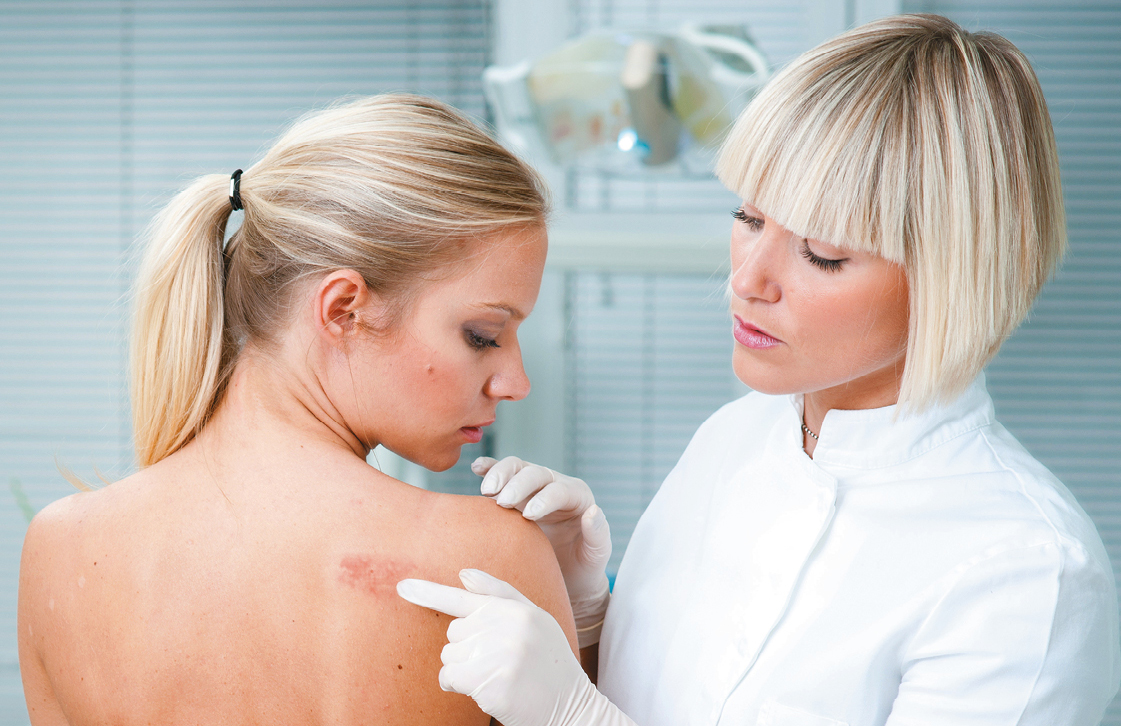 Solar urticaria has several causes. To identify them, you need to contact a specialist.
Solar urticaria has several causes. To identify them, you need to contact a specialist. Preventative measures for solar urticaria
The main method of preventing urticaria from the sun in people predisposed to it is careful protection from direct sunlight, especially in summer, when it is hottest.
Such people need to follow several rules:
You can only be outside in the shade when the sun is not at its peak (before 10 a.m. and after 4 p.m.);
the skin should be protected by closed, light-colored clothing with long sleeves;
the use of protective creams with UV filters is recommended;
it is necessary to follow a hypoallergenic diet, including dairy and dairy products, lean fish, boiled vegetables;
You will have to completely stop using it during this period. alcoholic drinks;
It is useful to drink a lot of fluid (up to 2 liters daily) for faster removal photosensitizing substances from the body;
Visiting the solarium is completely prohibited.
Treatment of solar urticaria
The treatment regimen should be selected by a doctor. Usually good result bring following methods:
Reception antihistamines new generation (“Erius”, “Kestin”, “Claritin”), their side effect usually minimal. They block the production of histamine in cells, eliminate itching, and serve as a kind of antiseptic.
Applications of anti-inflammatory ointments local application. Usually prescribed Not hormonal drugs, which have a calming effect (“Fenistil-gel”, “Panthenol”, “Gistan”). But may be needed hormonal agents for external use (ointments “Flucinar”, “Soderm”, “Elokom”). They help a lot, although sometimes they have side effects.
The use of antioxidant therapy (vitamins A, E, lipoic acid).
In some cases, so-called phototherapy is prescribed.
PUVA therapy is also an effective treatment method skin diseases, which involves combining the patient’s intake of a photoactive substance (psoralen) with irradiation of his skin with long waves of the ultraviolet spectrum.
There are known successful attempts to treat this disease with plasmapheresis, a special method of blood purification.
With the arrival of warm days, everyone strives to leave the city limits and go on vacation to the sea. The older generation prefers summer cottages, quiet, calm work in gardens and vegetable gardens. Previously, we only risked getting hay fever during this period of time. But the rapid development of technologies that affect the ecology and condition of our body is introducing more and more new diseases. Thus, allergies to ultraviolet radiation have become quite widespread. And the main inconvenience from it is solar urticaria.
What does solar urticaria look like?
Hives are the main symptom of sun allergy. Its forms and places of manifestation are varied. It often manifests itself in the form small pimples, watery blisters, pink or red papules with clear and even outlines. In severe cases, they can reach up to 13 cm in size or merge into one red spot. The patient may experience itching and burning of the affected skin.
The appearance of such a rash, as a rule, occurs from the first minutes of exposure to open sunlight. Rarely, it may take several hours for hives to appear. First, the disease affects exposed skin, and only then does it spread throughout the body. At initial stage These symptoms will go away on their own within two hours. But they are often observed chronic forms hives.
Causes of urticaria
People with Celtic skin type most often suffer from this type of sunburn. This type of skin practically does not tan, but simply becomes covered with red spots and burns. Children and pregnant women are at risk. The cause of any type of allergy is a malfunction immune system. Also, do not lose sight of the condition and functioning of the liver and gastrointestinal tract.
A huge number of plants cause allergic reactions. They may be contained in medicines, creams, ointments, be part of the drink. Simple tactile contact with them is also prohibited. Such plants include:
When going outside into the open rays of the sun, you should not use cosmetics. Yes, it causes hives decorative cosmetics, creams and perfumes. In the summer, try not to use deodorants - they cause dermatitis various shapes. Even using antibacterial soap can cause illness. The following essential oils should not be used or inhaled:
- Bergamot;
- Patchouli;
- Citrus;
- Dill;
- Tea tree.
While relaxing by the sea, various medications. The use of antibiotics (Ciprofloxacin, Doxycyline, Biseptol, Griseofulvin), antifungal drugs, hormonal contraceptives, corticosteroids, drugs to normalize heart function. antidepressants. We must not forget about the factor of heredity. If a woman suffered from any type of allergy during pregnancy, a predisposition to its symptoms can pass on to the baby.
Traditional treatments for solar urticaria
First of all, in the treatment of solar urticaria, it is worth noting the effectiveness of antihistamines. Of course, third generation drugs have the highest effect. At the initial stage of manifestation, it is possible to use the first two. A product such as Erius has an anti-allergic effect and relieves skin inflammation. The drug is often prescribed by doctors to pregnant women. Adverse reactions occur very rarely, in the form of headaches and rhinitis.
The antihistamine Kestin blocks the production of histamine in cells. Helps combat itching and inflammation skin various shapes and locations. Serves as a kind of antiseptic. Unfortunately, if the dosage is not followed, it has many side effects: drowsiness, nausea, weakness, lacrimation, dizziness, insomnia.
Relieves hives within half an hour after taking Claritin. The effect lasts throughout the day. It is available in the form of tablets and syrup, so it is approved for use by even the smallest children. As with any remedy or intervention, the body may react inappropriately with drowsiness, headache or gastrointestinal disorders. Check out other antihistamines:
For complex treatment funds must be used local action: creams, ointments and emulsions. There are hormonal and non-hormonal drugs. Hormonal ointments They are fast-acting and there is no doubt about their effectiveness. But when open skin manifestations their use is impossible, since hormones can penetrate into the blood, which will lead to hormonal changes in organism. The most popular among them:
- Elokom;
- Advantan;
- Soderm;
- Flucinar.
Any ointment is applied the thinnest layer on and around damaged areas. Depending on the severity of the disease, it should be used from twice a day to several times a week. Such drugs can relieve the patient from itching and burning, which will normalize the nervous system and restore healthy sleep. But due to their composition, such drugs are very rarely prescribed to children and are never used by pregnant women.
Non-hormonal drugs are used by almost everyone, regardless of age. In pharmacies they are dispensed without presenting a prescription from a doctor. In most cases, they have a cooling effect. Get rid of solar urticaria very quickly. We recommend using the following tools:
If the diseased skin begins to peel off and crusts form, you need to smear it with any oil-based baby skin and hygiene cream.
Treatment at home
Most easy method To get rid of the itching of solar urticaria is to freeze it. Rub the damaged skin with ice cubes or something cold. Rubbing will help relieve swelling menthol oil or mint tea. Chamomile or plain lotion is also suitable as a lotion. green tea. Try to take cool or cold showers more often.
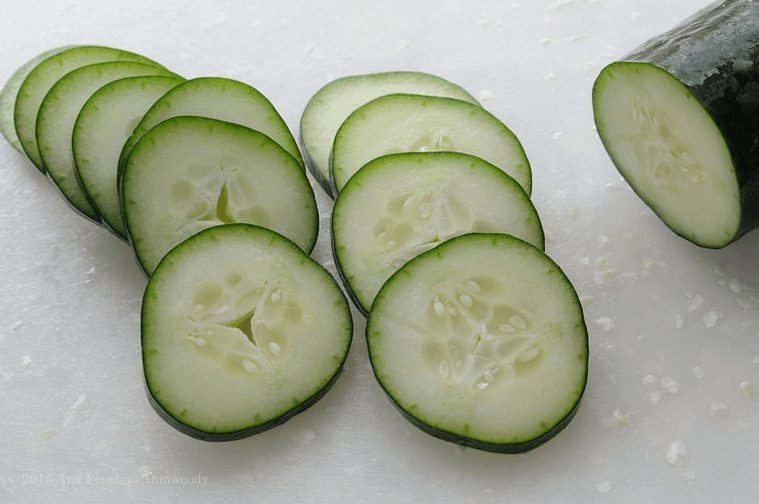 In the refrigerator of any housewife, and especially in the summer, there is a vegetable such as a cucumber. Cut it into circles and apply it to the pimples, rubbing the juice with massage movements. You can grate it on a fine grater and use it as a compress, fixing it with a bandage for half an hour. Potatoes are an analogue of cucumber. These products will absorb all the heat and relieve swelling. During the treatment period, refrain from playing sports - do not allow your skin to sweat. Take baths with oatmeal infusion.
In the refrigerator of any housewife, and especially in the summer, there is a vegetable such as a cucumber. Cut it into circles and apply it to the pimples, rubbing the juice with massage movements. You can grate it on a fine grater and use it as a compress, fixing it with a bandage for half an hour. Potatoes are an analogue of cucumber. These products will absorb all the heat and relieve swelling. During the treatment period, refrain from playing sports - do not allow your skin to sweat. Take baths with oatmeal infusion.
Eat as many diuretic foods as possible, namely watermelons, melons, grapes, apples, celery. The juice of the latter should be consumed three times a day and wiped over the body. Aloe juice will help relieve redness. Have a drink a large number of water and Activated carbon- This is to rid the body of toxins, which will speed up the healing process. It has long been known about healing properties string and lavender. Take baths with their decoctions. Prepare a weak infusion of these herbs and drink 50 grams before meals.
How to avoid solar urticaria?
To prevent allergic manifestations on the skin, avoid direct exposure to it. Sunbathing is necessary only in the shade and at permitted times, when the sun is not in the highest phase of its activity. Don't forget to use protective equipment before going outside. We advise ladies to get fashionable hats with wide brims so as not to expose their faces to burns and hives. Give preference to clothes in light colors and covering the body as much as possible.
When leaving the water, remove all moisture from your body with a towel. Do not leave drops of water on it. All decorative cosmetics and cosmetic ointments and creams are prohibited. Under no circumstances should you drink alcohol while on vacation. If you know you are prone to solar urticaria, follow a hypoallergenic diet, because ignoring the disease will lead to second-degree burns. Chronic forms of diseases may appear.





